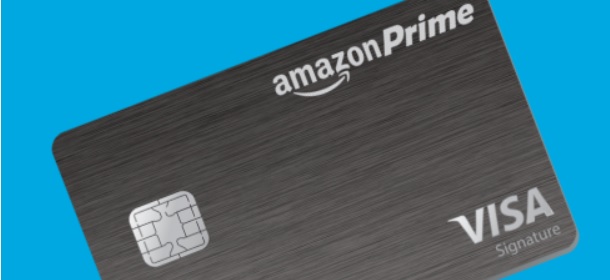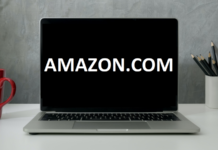NOTICE: This post references card features that have changed, expired, or are not currently available
Yesterday I described how it may be possible to buy and sell items from Nordstrom in order to effectively buy British Airways Avios miles for as low as half a cent each. Please see this post for details. I also promised to write a post describing how I went about finding the best items for resale. This is that post.
WARNING: I am not an expert at this. I’m barely even a novice at this! I have one and only one experience in buying and selling multiple items for the purpose of earning miles (see Mileage run shopping results). So, while I will describe my process, you should not think of this as expert advice! It is just one guy’s approach. Hopefully some readers who are better at this than me will chime in with better advice in the comments below.
The Goal
The goal, for me, is to find items that will resell easily for as little loss as possible. I think of the total loss as the total price paid for miles. For example, if I buy $1000 worth of merchandise at Nordstrom for 36 miles per dollar, I will receive 36,000 miles. If, after selling this merchandise, I have a total loss of $180, then $180 is the price I paid for those 36,000 miles. In order to calculate cost per mile, I divide the total loss by the total miles earned: $180 / 36,000 = $.005 = .5 cents per mile.
Expenses
When planning to resell items, it is important to factor in all of the expenses you will incur:
- Sales taxwhen buying items (unless you are lucky enough to live in a no tax state!)
- Resale discount. In order to sell your items, you will most likely need to heavily discount it from the amount you paid.
- Selling fees. If you sell via EBay or Amazon, for example, they will take a hefty cut of your resale price.
- Shipping costs. Unless you pass along the shipping costs to your buyers, or you sell locally, you will have to cover shipping to them.
If you Google for “eBay seller calculator”, “Amazon seller calculator”, etc., you’ll find web sites that can help you calculate your total profit (in this case, total loss). Use these tools to estimate your loss and make sure that the final cost per mile is something you can live with. If you don’t think you can end up with a final cost of less than 1 cent per mile you probably shouldn’t do it.
Items I look for
I look for items that meet the following criteria:
- Lightweight and small: I like to offer free shipping and I don’t want to pay a fortune for shipping to my buyers. Cameras, headphones, tablet computers, jewelry, watches, etc. are examples that fit this criteria.
- Good price: I look for items that sell for the same price (or less) on Amazon.com. If an item is readily available through Amazon at a much lower price then there is little possibility that I can resell the item without taking a huge hit. As I learned from DeltaGOLDflyer, in many cases it is possible to force a good price by using a merchant’s price match guarantee. I haven’t ever done this, though.
- Consumer Electronics: I prefer to buy consumer electronics because both EBay and Amazon charge lower selling fees for items in this category (for fixed price sales).
- Ratings. I look for items that get very good ratings/reviews: 4 stars or higher.
- Popularity: I want items that will resell easily. Luckily Amazon.com has lists of best sellers in each of their departments. For example, here is an example of Amazon’s best seller list for computers & add-ons
. I try to make sure that things I buy are in the appropriate best seller list.
- Resale value: This one is key. I look for items that resell for as close to the purchase price as possible. One way to do that is to search for the item on EBay and then filter the results to items that are “new” and to “completed listings”. The results will show in green the items that sold and for how much. In red are the items that did not sell. Ideally most of the items in green sold in the ballpark of what I was hoping for, and hopefully the items in red were way overpriced.
- Competition: Uncheck the “completed listings” box on EBay to see how many people are selling the same item. If there are too many, the market may be too competitive to be successful.
So, that’s about it. I spend a lot of time surfing the merchant’s web site looking for items that might fit the criteria listed above. I grab model numbers and search for them in Amazon and EBay to research their popularity, resale value, and competition. Then, finally, I go with my gut: does it make sense to me that people would buy this from me? Is this a cool/desirable product? In the end, I take a deep breath, take out my credit card, and spend.
If you have other strategies for finding good items for resale, please comment below!
Win a Nook!
Reminder: Until Feb 14th, you can win a Barnes & Noble Nook Color simply by adding a comment to our ever growing story. Visit this page to participate!






[…] you’re interested in doing this, read my post “Hunting for deals” to see how I go about finding the best items for […]
I bought the book for $145 and then sold it for $185 on amazon. The profit was $40 – amazon fees – shipping cost + amazon shipping credit. It turned out to be around $5-10 net profit.
I ship the books by usps media mail. Its the cheapest and actually quite fast.
nazgul: Got it. So, you found a price at B&N that was more than 15% cheaper in order to cover Amazon’s 15% referral fee?
Ah ok, I am not that familiar with ebay. So far I have only sold items through amazon. As for the textbooks, I spent 5 hours hunting for books on B & N that cost less than what is being sold on amazon. I went through Ultimate Rewards, claimed my 10x, and then sold the book on amazon for a net profit of about $5 and got 1450 points. I also found that electronic expo sells lots of discounted bundled cameras with accs. The items can then be sold separately on amazon for large profit. I haven’t tried the camera’s idea yet, but I am thinking it might be a good way to burn through a bunch of visa gift cards I got from Staples.
nazgul: Interesting idea! Did you drop ship the textbook to the person who bought your book on Amazon?
I was thinking of doing something similar to this in order to get my spend up, but what happens if you sell somebody an item and then they return it. Its no longer brand new and in order to sell it again, you’ll have to sell it as used and drop the price a lot. Thats why I thinking of buying and selling textbooks. It seems like there is less risk with them.
nazgul: On EBay you can mark items as “returns not accepted.” Interesting idea about textbooks. Do you have a way to buy them cheap enough to be worth buying and reselling?
I am curious if you have a standard for item price range that you consider worth your while? I’m looking at some mid-range items that will definitely add up to a lot of transactions & wondering if I’m aiming too low on a target amount.
IndifferentCrve: Good question! I should have said something about that. Yes, I generally wouldn’t bother with any item worth less than a couple of hundred dollars unless you have a good way of selling lots of stuff with little hassle.
Don’t forget sweating on ebay the last 5 minutes for all those last second bidders.. Also if you can pay for postage thru PayPal to avoid the lines at usps